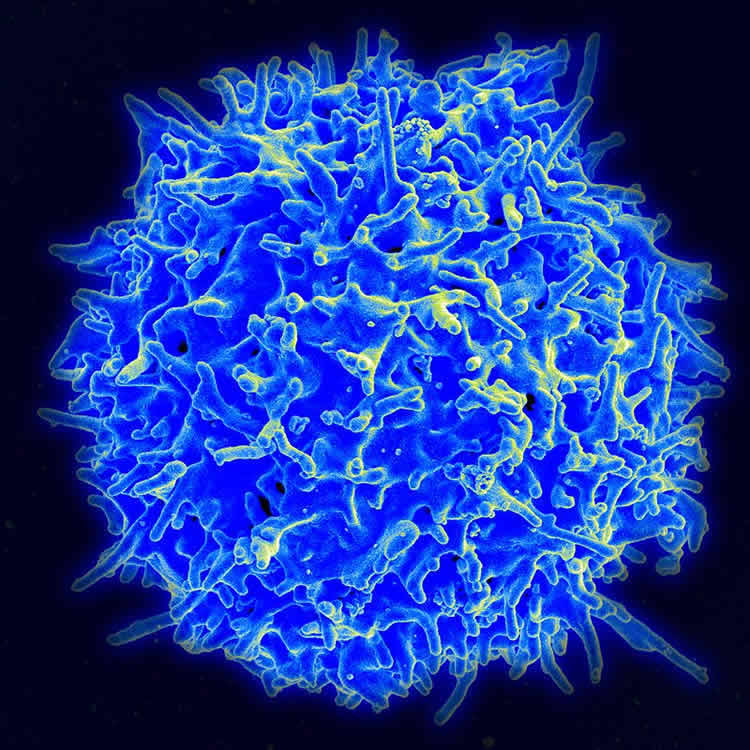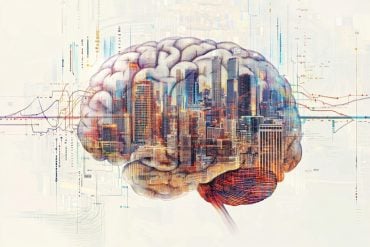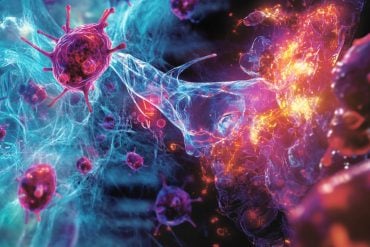Summary: Researchers have discovered how the nature of T cells help protect the brain from viruses. The findings shed light on the role the immune system plays in a number of neurodegenerative disorders.
Source: KNAW.
Researchers from the Netherlands Institute for Neuroscience and Amsterdam UMC have disclosed the nature of how T cells protect the brain against harmful viruses. The results of the study, which are published in Nature Communications, are important for investigating the role of the immune system in numerous brain disorders.
Immune system
The immune system protects the body against infections and cancer. The so-called T cells play a key role in this process. When T cells do not work properly, an inflammation can develop in for example the brain. Until recently, little was known about the properties of these cells in healthy brains. “With this research, we have gained more knowledge about the location of T cells in the brain, how they look, what kind of inflammatory proteins (cytokines) they produce, and how they are controlled,” says researcher and neurologist in training Joost Smolders.
The scientists have found that the two proteins CTLA-4 and PD-1 are present in large quantities on T cells. These proteins, for which the Nobel Prize for Medicine has been awarded to the discoverers this year, are important inhibitors for T cells.

“If we understand the rules of the game, which T cells in the brain adhere to, then we can understand how T cells deviate from this in brain disorders. This can lead to advances in the understanding and treatment of diseases such as multiple sclerosis, but also in the treatment of tumors in the brain. ”
Brain donors
With financial support from the MS Research Foundation, the scientists have investigated T cells from brain tissue of brain donors from the Netherlands Brain Bank (NBB). “For the understanding of the role of the immune system in brain disorders, a donor program such as the NBB is of crucial importance. The quality of the material makes unique research possible” says Smolders.
Funding: Study supported by MS Research Foundation.
Source: Jörg Hamann – KNAW
Publisher: Organized by NeuroscienceNews.com.
Image Source: NeuroscienceNews.com image is in the public domain.
Original Research: Open access research for “Tissue-resident memory T cells populate the human brain” by Joost Smolders, Kirstin M. Heutinck, Nina L. Fransen, Ester B. M. Remmerswaal, Pleun Hombrink, Ineke J. M. ten Berge, René A. W. van Lier, Inge Huitinga & Jörg Hamann in Nature Communications. Published November 2 2018.
doi:10.1038/s41467-018-07053-9
[cbtabs][cbtab title=”MLA”]KNAW”Nature of Immune Cells in Brain Discovered.” NeuroscienceNews. NeuroscienceNews, 2 November 2018.
<https://neurosciencenews.com/immune-cells-brain-10136/>.[/cbtab][cbtab title=”APA”]KNAW(2018, November 2). Nature of Immune Cells in Brain Discovered. NeuroscienceNews. Retrieved November 2, 2018 from https://neurosciencenews.com/immune-cells-brain-10136/[/cbtab][cbtab title=”Chicago”]KNAW”Nature of Immune Cells in Brain Discovered.” https://neurosciencenews.com/immune-cells-brain-10136/ (accessed November 2, 2018).[/cbtab][/cbtabs]
Abstract
Tissue-resident memory T cells populate the human brain
Most tissues are populated by tissue-resident memory T cells (TRM cells), which are adapted to their niche and appear to be indispensable for local protection against pathogens. Here we show that human white matter-derived brain CD8+ T cells can be subsetted into CD103−CD69+ and CD103+CD69+ T cells both with a phenotypic and transcription factor profile consistent with TRM cells. Specifically, CD103 expression in brain CD8+ T cells correlates with reduced expression of differentiation markers, increased expression of tissue-homing chemokine receptors, intermediate and low expression of the transcription factors T-bet and eomes, increased expression of PD-1 and CTLA-4, and low expression of cytolytic enzymes with preserved polyfunctionality upon activation. Brain CD4+ T cells also display TRM cell-associated markers but have low CD103 expression. We conclude that the human brain is surveilled by TRM cells, providing protection against neurotropic virus reactivation, whilst being under tight control of key immune checkpoint molecules.






